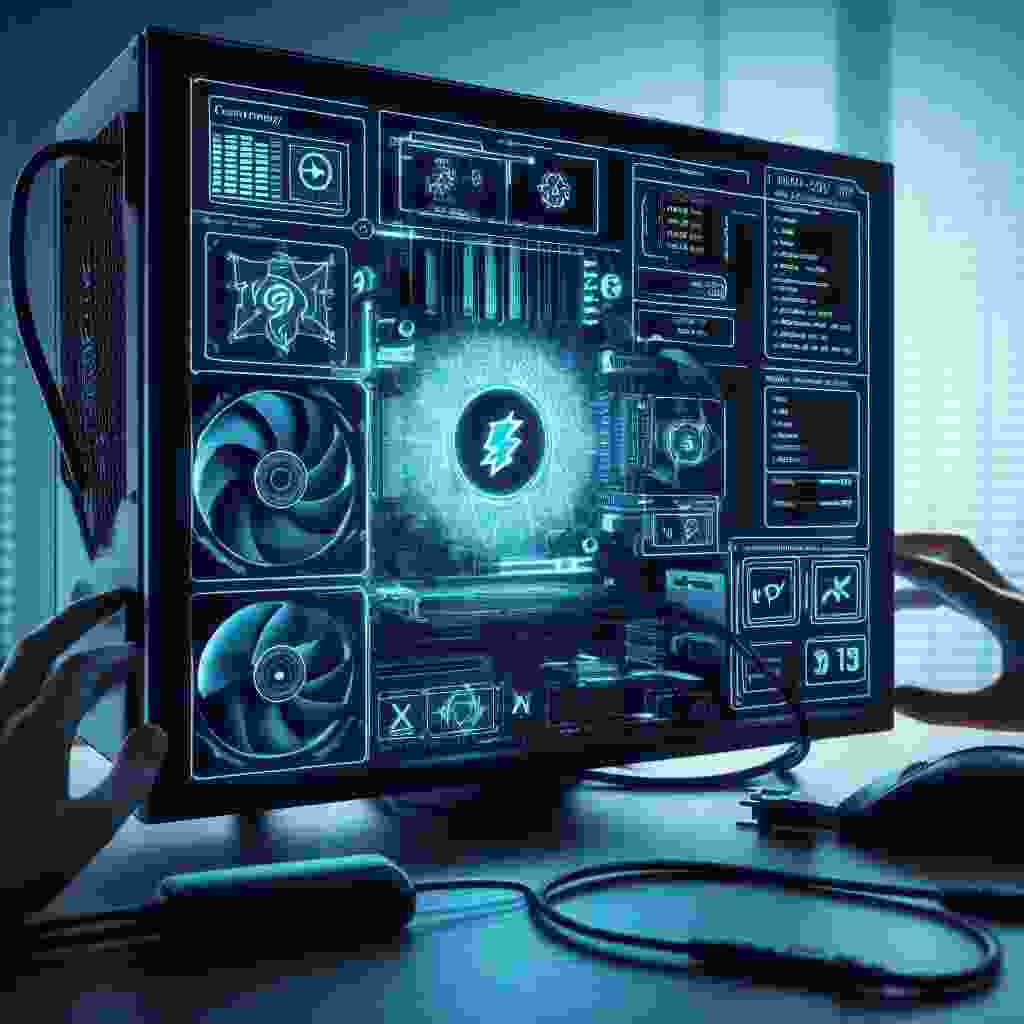There are several ways to check the power supply on a PC running Windows 10. Here are some methods:
Use Power Options:
- Type “power options” into the Windows search bar and select it.
- Click on “Additional power settings” on the right side of the window.
- Click on “Change plan settings” next to the power plan you are currently using.
- Click on “Change advanced power settings.”
- Expand the “Battery” section and then expand the “Low battery level” and “Critical battery level” options to see the percentage of battery remaining.
Use Device Manager:
- Right-click the Start button.
- Choose Device Manager from the menu.
- In the Device Manager window click the arrow next to System Devices.
- Double-click ACPI Fixed Feature Button.
- Choose the Power tab.
- In the Power Management section check AC Power Status.
Use System Information:
- Press Windows+R to open the Run dialog box.
- Type “msinfo32” into the text box and press Enter.
- Select “Components” from the left-hand menu.
- Click on “Power” to see information about your power supply.
Check the label on the power supply:
- Open the case of your PC.
- Look for the label on the power supply unit (PSU) to see the wattage listed.
Use a power supply tester or power meter:
- A power supply tester is a device that you can plug into your power supply to test the wattage.
- A power meter is a device that you can plug into your power supply to measure the wattage.
It’s important to know your PC’s power supply wattage if you want to upgrade other parts of the computer like your graphics card.
Can you explain the common signs or symptoms that might indicate a power supply issue on a Windows 10 PC and how to differentiate them from other hardware problems?
There are several signs or symptoms that might indicate a power supply issue on a Windows 10 PC and it’s important to differentiate them from other hardware problems. Here are some common signs of power supply failure:
- Power-on fails (system fails to start or lock ups)
- Spontaneous rebooting
- Intermittent lockups during applications
- Hard drive and fan fail to spin up simultaneously
- Overheating of power supply due to fan failure
- Small brownouts that cause the system to fail and restart
- Electric shocks when the case is touched
- System completely dead and no LED lit on the motherboard
- Smoke from the PSU or other components
- Touching your computer case shocks you
- Random computer shut downs or restarts
- Random blue screen of death (BSoD)
- Extra noise
It’s important to note that some of these symptoms can also be caused by other hardware problems such as a failing hard drive or motherboard.
To differentiate them from other hardware problems it’s recommended to test the power supply directly using a dedicated PSU tester or digital multimeter.
Are there any precautions or safety measures one should take before attempting to check the power supply of their Windows 10 PC especially in terms of electrical safety?
Before attempting to check the power supply of a Windows 10 PC it’s important to take some precautions and safety measures especially in terms of electrical safety. Here are some tips to keep in mind:
- Turn off the computer and unplug it from the power source before opening the case.
- Use an anti-static wrist strap to prevent electrostatic discharge (ESD) that can damage the components.
- Use a flashlight to see inside the case and avoid touching any components with your bare hands.
- Do not touch any capacitors or other components on the power supply as they can hold a charge even when the computer is turned off.
- Use a dedicated PSU tester or digital multimeter to test the power supply directly as this is safer than using a jumper test or power supply tester.
- If you are not comfortable working with electronics or do not have experience with computer hardware it’s recommended to seek professional help.
If a power supply issue is detected what are the recommended next steps for troubleshooting and potentially replacing the power supply unit in a Windows 10 PC?
If a power supply issue is detected in a Windows 10 PC here are the recommended next steps for troubleshooting and potentially replacing the power supply unit:
- Verify the issue:
- Check the power outlet and power cable to ensure they are working properly.
- Check the external switch on the power supply to ensure it is turned on.
- Check the power supply fan to ensure it is spinning properly.
- Use a dedicated PSU tester or digital multimeter to test the power supply directly.
- Replace the power supply:
- If the power supply is faulty it will need to be replaced.
- Purchase a new power supply unit that is compatible with your PC.
- Turn off the computer and unplug it from the power source.
- Open the case and disconnect the power supply cables from the motherboard and other components.
- Remove the old power supply unit and install the new one.
- Reconnect the power supply cables to the motherboard and other components.
- Close the case and plug in the power cable.
- Turn on the computer and test the new power supply.
- Troubleshoot other hardware issues:
- If the power supply is not the issue troubleshoot other hardware components such as the motherboard CPU or RAM.
- Use built-in Windows 10 tools such as the Power troubleshooter or BIOS updates to help diagnose and fix power supply issues.
It’s important to take safety precautions when working with electronics and to seek professional help if you are not comfortable working with computer hardware.
